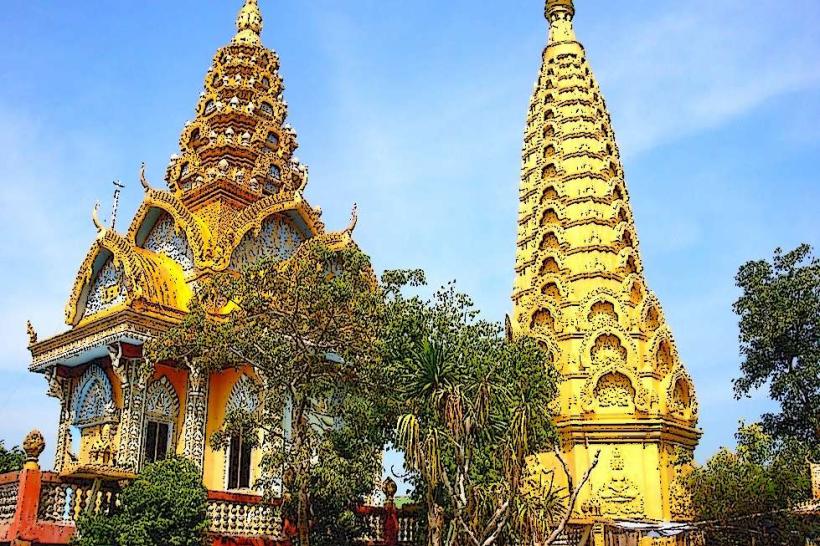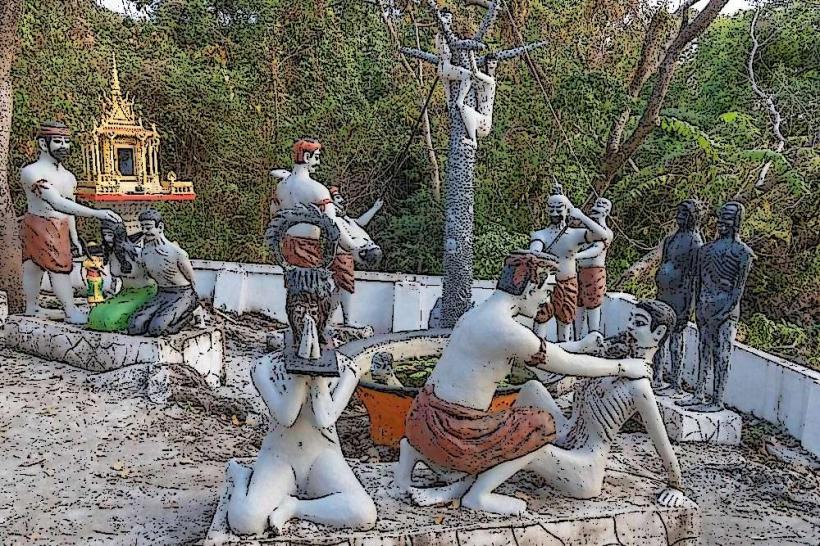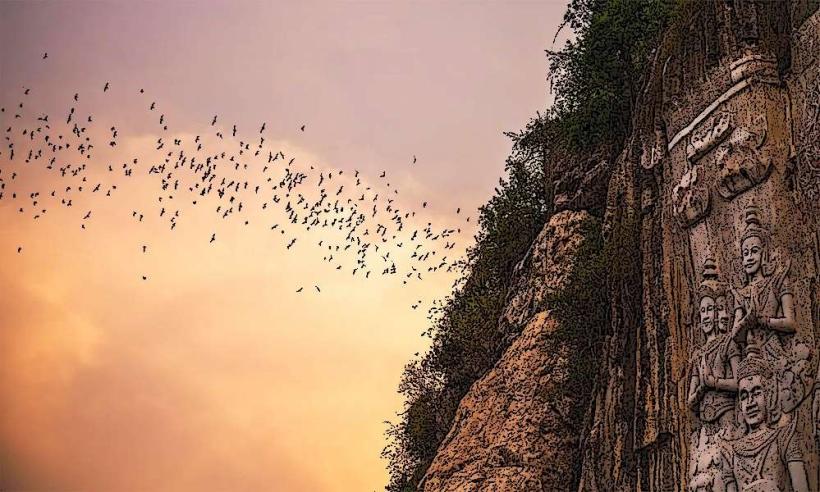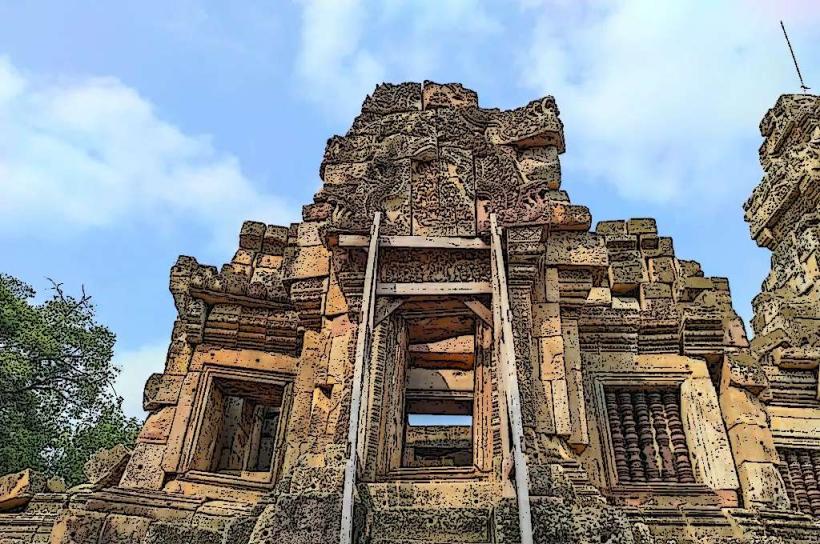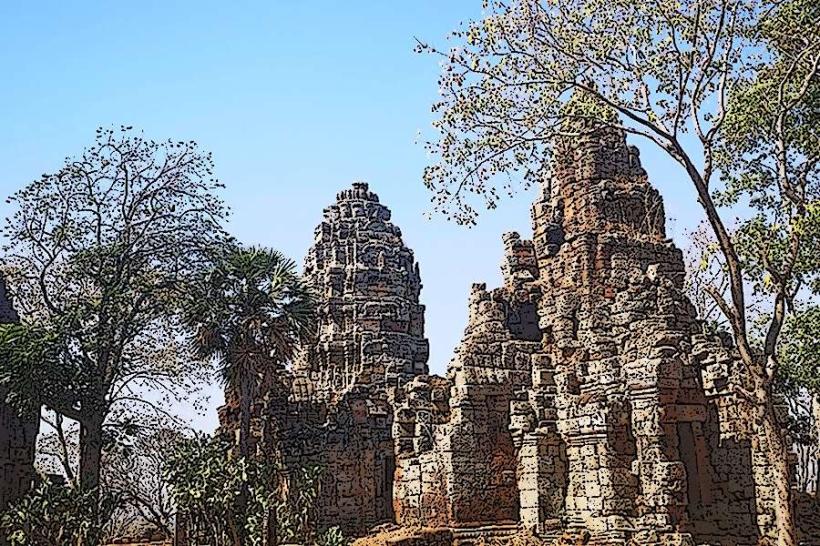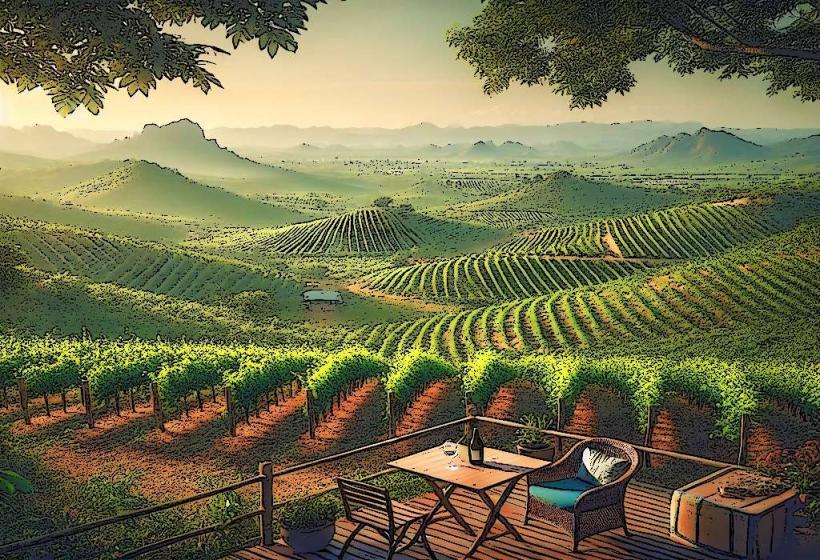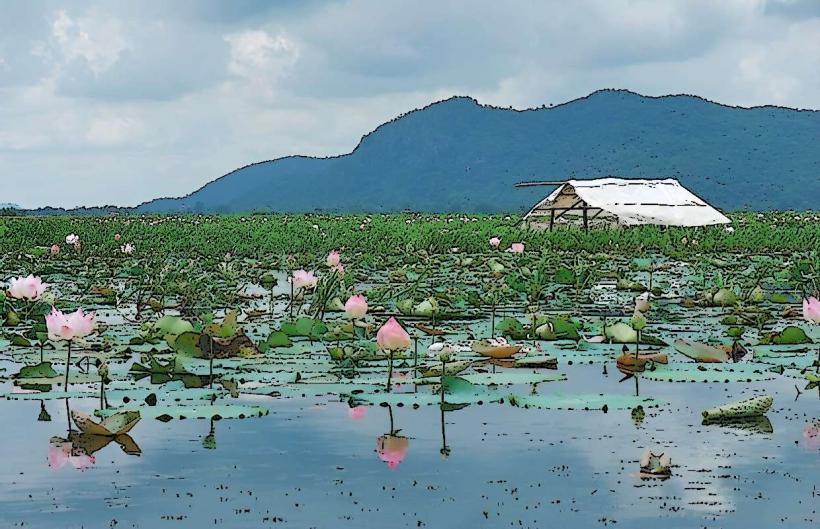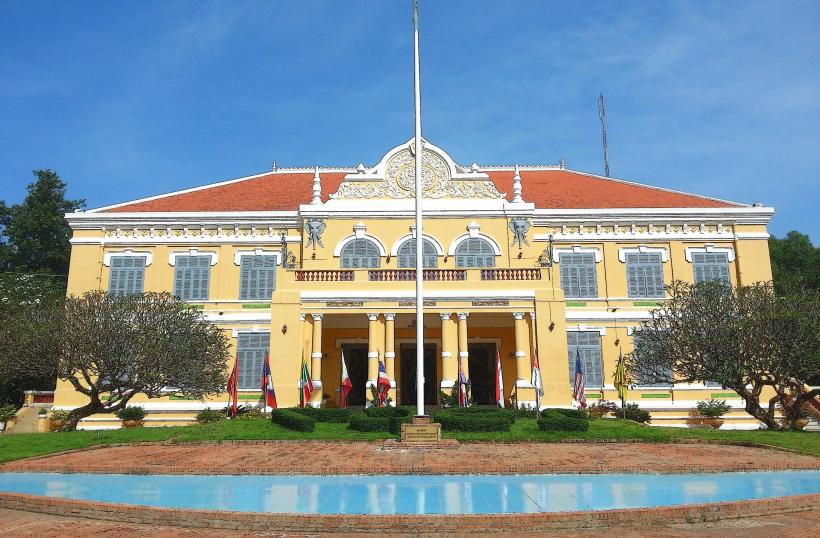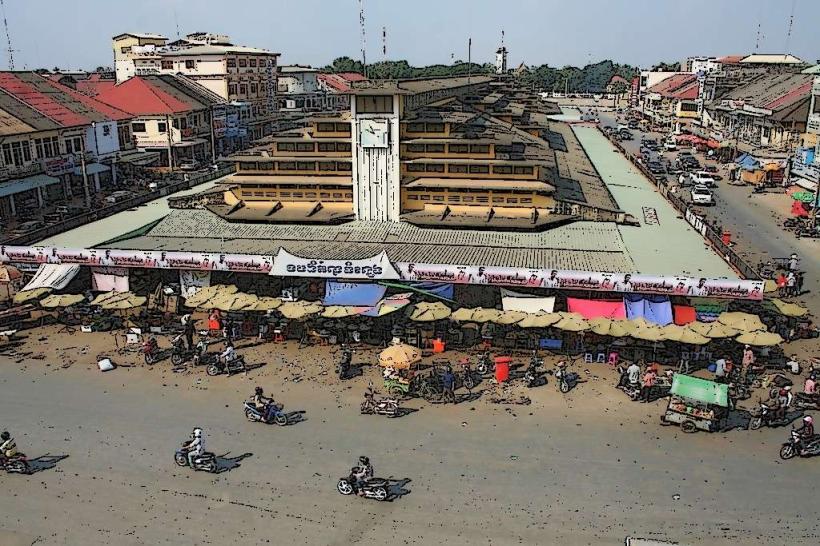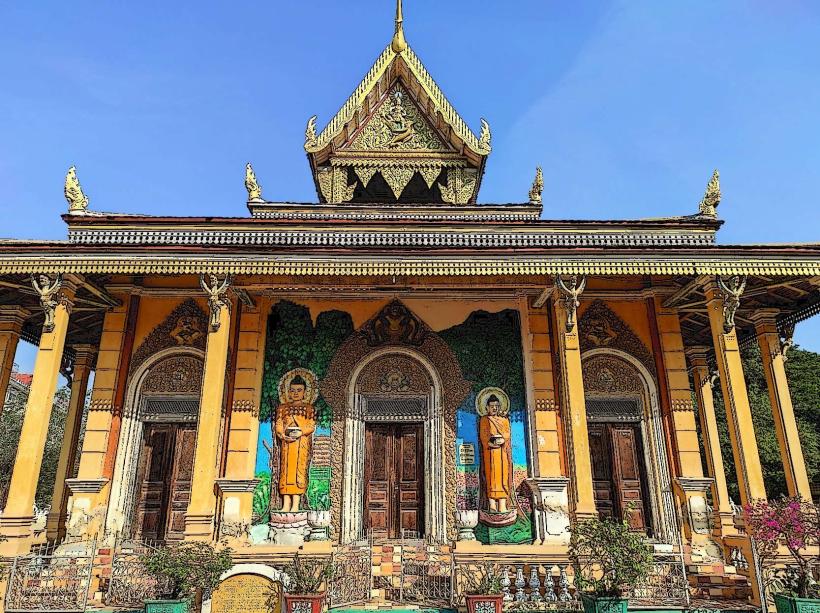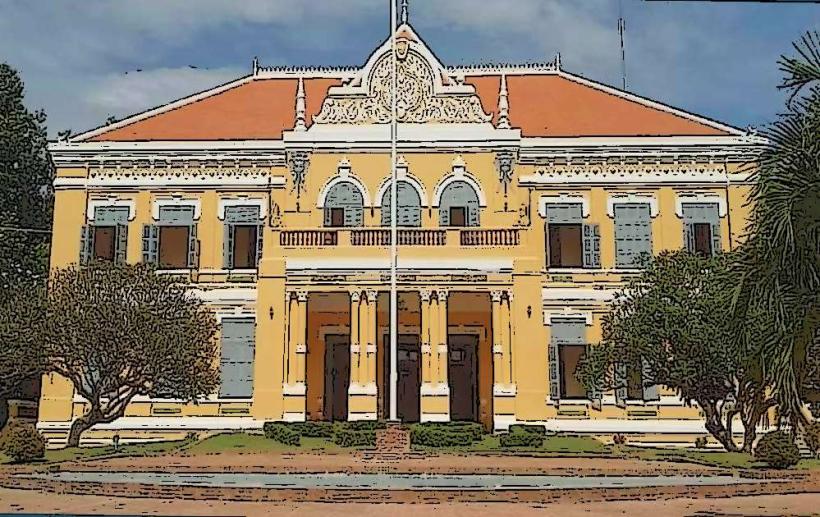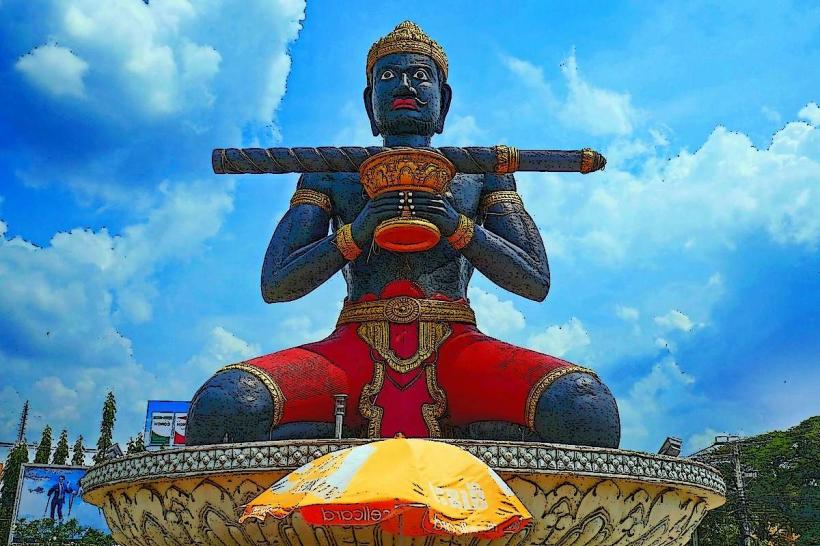Information
City: BattambangCountry: Cambodia
Continent: Asia
Battambang, Cambodia, Asia
Overview
Battambang, in northwestern Cambodia, is both a province and a city, celebrated for its quiet rice fields, graceful colonial-era buildings, and its location not far from ancient Angkorian temples, to boot fewer travelers make it to Battambang than to Siem Reap or Phnom Penh, yet the town brims with quiet charm-golden rice fields stretching to the horizon and streets steeped in history.Many consider it one of Cambodia’s best-preserved provincial capitals, where faded pastel shutters and ornate facades from the French colonial era stand beside weathered stones of the ancient Khmer Empire, likewise battambang sits in Cambodia’s northwest, roughly 290 kilometers-about a half-day’s drive-west of Phnom Penh, the nation’s capital.As far as I can tell, It sits close to Tonle Sap Lake, with green hills rising around it and quiet farmland stretching into the distance, therefore the city’s home to about 150,000 people, but the province swells with more thanks to the farms and miniature towns scattered across the countryside.In a way, Battambang province spans roughly 11,000 square kilometers, stretching from rice fields that glow gold at sunset to the forested hills in the north, in conjunction with the official language is Khmer, but you’ll hear plenty of English in tourist spots-especially in cafés, shops, and hotels that welcome visitors from abroad.Battambang runs on Indochina Time (ICT), which is UTC+7-seven hours ahead of London’s winter clock, while battambang’s story stretches back centuries, shaped by waves of different civilizations, from ancient Khmer builders to French traders along the river.During the Khmer Empire, the city held an significant location, its spot near Tonle Sap Lake drawing merchants with boats piled high with rice and spices, equally important in the 11th century, Battambang belonged to the Angkorian Empire, a time when its temples echoed with the sound of chanting monks.Many of the province’s temples and ruins trace their origins to this era, from weathered Hindu shrines to quiet Buddhist halls where the stone still holds the scent of rain, moreover french Colonial Era: In the late 19th century, Battambang fell under French control, formally joining French Indochina in 1907 when it was ceded to them.You can still witness the French touch in the city-colonial buildings with faded shutters and wrought-iron balconies line its streets, equally important khmer Rouge: Like much of Cambodia, Battambang endured the harsh years of the Khmer Rouge regime from 1975 to 1979, when empty streets echoed under a heavy silence.The city reeled from the violence and wreckage of that time-shattered windows, empty streets-but it’s found its footing again, to boot battambang sits on the northwestern plains of Cambodia, where low, green hills rise beyond the patchwork of rice fields that ring the city.This region overflows with green hills, rice paddies, and winding rivers, all coming together to paint a peaceful countryside scene, in addition not far from here lies Tonle Sap Lake, one of Southeast Asia’s largest freshwater bodies, its muddy waters feeding the fields that keep local farms alive.Battambang enjoys a tropical climate with two clear seasons, consequently from May to October, the rainy season brings frequent downpours, thick humidity, and warm air that hovers around 30–32°C (86–90°F), in some ways During this time, heavy rain may swell the streets and cause flooding, moreover dry Season (November–April): Cooler, with crisp air and temperatures around 25–33°C (77–91°F), it draws the biggest crowds of the year, more or less Warm, steady rains nourish the region’s fields, keeping rice paddies lush and feeding the rows of mango and citrus orchards that stretch to the horizon, equally important in Battambang, you’ll find a lively mix of classical and recent-silk weaving and market chatter alongside French-style balconies-shaped by its farming roots, colonial history, and deep ties to the Khmer Empire.In Battambang, as in much of Cambodia, Buddhism shapes daily life, with golden-roofed wats and quiet monasteries tucked along busy streets and rice fields across the province, subsequently khmer Heritage: Battambang still holds tight to its traditional Cambodian roots, from the warm scent of street-side noodle stalls to the graceful steps of its Apsara dancers.Visitors can enjoy local festivals, watch sparkling skirts swirl in traditional dances, and glimpse the rhythms of daily life in rural villages, and french Colonial Influence: You can still view the French touch in Battambang’s vintage quarter, where faded pastel-fronted buildings lean over narrow streets and miniature European-style cafés spill the smell of fresh bread into the air.You can taste the French touch in buttery pastries and discover it in the graceful arches of ancient stone buildings, also in Battambang, farms, bustling markets, and modest workshops keep the economy moving, with tourism adding a steady stream of visitors.This city serves as a key agricultural hub in Cambodia, where many locals spend their days tending rice paddies under the fiery sun, at the same time agriculture is central here-Battambang stands out as one of Cambodia’s main rice producers, its wide green fields stretching to the horizon.The area produces fresh fruits and crisp vegetables, and its rubber industry is steadily expanding, what’s more tourism is on the rise as visitors come to explore the city’s ancient temples, wander through its rolling green hills, and admire the faded elegance of its colonial streets.Tourists from near and far come to view Angkor’s crumbling stone temples, wander through lush forests, and explore its vibrant cultural sites, in turn in Battambang, slight industries thrive-rice mills humming late into the evening, carpenters shaping smooth teak, and workshops weaving colorful textiles.Actually, Banan Temple, perched high on a hill, is an Angkorian treasure dedicated to the Hindu god Shiva, where the breeze carries the scent of dry grass and the view stretches for miles across the countryside, as well as Wat Ek Phnom, a crumbling 11th‑century Khmer temple complex, stands just outside Battambang, where warm dust rises between its weathered stone carvings, mildly Phnom Sampeau is home to winding caves, hilltop temples, and the haunting Killing Caves, where the air feels cool and still, therefore the site holds deep history, dating back to the Khmer Rouge era, when rusted gates and silent walls marked a time of fear.Truthfully, Battambang Bat Caves: As the sun dips low, thousands of bats stream out in a gloomy, rippling cloud-a sight you won’t forget, therefore colonial Architecture: In the heart of the city, rows of weathered French colonial buildings stand tall, their pale shutters and wrought-iron balconies offering a clear window into its past.The Sangker River winds through Battambang, its calm banks dotted with stilt houses, and invites visitors to take boat rides and wander the quiet countryside, likewise art and culture come alive in Battambang, where modest galleries glow with painted canvases, workshops hum with sculptors at work, and evening performances bring Cambodian dance to the stage.Just so you know, In Battambang, you’ll find traditional Khmer dishes alongside unique local specialties, like fragrant fish amok steaming in banana leaves, as well as one local favorite worth trying is Bai Sach Chrouk-tender grilled pork served over warm rice with a tangy side of pickled vegetables.Num Banh Chok is a Cambodian rice noodle dish with a fragrant fish broth, topped with crisp vegetables and fresh herbs, subsequently kuy Teav is a favorite Cambodian breakfast-steaming rice noodles in a savory broth, topped with fresh herbs, a squeeze of lime, and a bite of chili heat.Lok Lak: tender stir‑fried beef with a mound of rice and a sunny fried egg on the side, subsequently bamboo Sticky Rice, or Kralan, is a traditional treat cooked inside a hollow bamboo tube, with sticky rice blended with creamy coconut and soft beans.In a way, Samlor Korkor is a hearty Cambodian soup simmered with tender chicken, fresh vegetables, and warm, fragrant spices, as a result you can easily reach Battambang from other parts of Cambodia, yet the town still feels calm, without the constant buzz you’ll hear on Phnom Penh’s busy streets.Battambang International Airport is a modest hub, with just a few gates, handling mostly flights within Cambodia, in addition from the miniature airstrip in Battambang, flights link the city to Phnom Penh and several other spots across Cambodia.Buses run between Battambang and Phnom Penh, Siem Reap, and other towns, their engines humming in the warm afternoon air.
Author: Tourist Landmarks
Date: 2025-10-29
Landmarks in battambang

